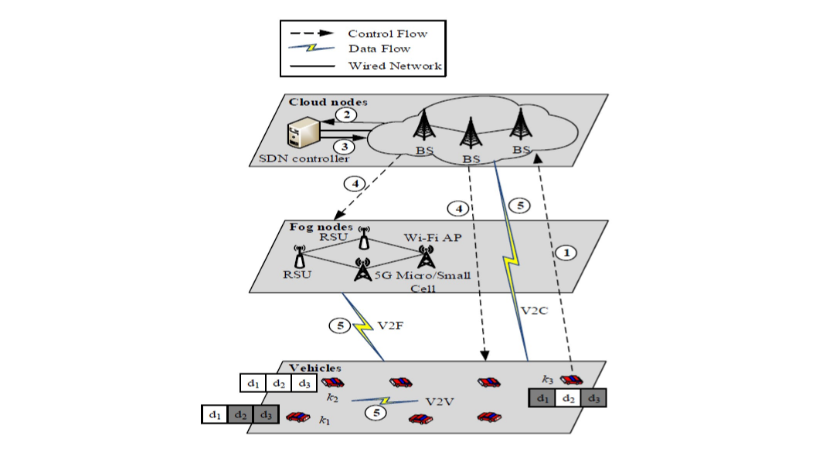Recently, a paper titled Fog Computing Empowered Data Dissemination in Software Defined Heterogeneous VANETs was accepted and published by IEEE Transactions on Mobile Computing (TMC) (CCF class A, JCR Zone 1), a top academic journal on computer network, with Professor Liu Kai from the BDSC (big data and smart computing) Research Group of the School of Computer Science as the first/corresponding author. The co-authors of the paper include Dr. Xiao Ke and Professor Guo Songtao from the School of Computer Science, Dr. Dai Penglin from Southwest Jiaotong University, Dr. Li Zhongcheng from City University of Hong Kong and Professor Cao Jiannong from the Hong Kong Polytechnic University.
The study of smart collaboration of VANET has greatly contributed to the deep integration of traditional transportation industry with new technologies such as mobile internet, artificial intelligence and big data, and plays an important role in improving transportation safety and efficiency and construction of green and smart cities. In February 2020, 11 ministries and commissions of China including the National Development and Reform Commission, the Ministry of Public Security, the Ministry of Transport and the Ministry of Industry and Information Technology of the People's Republic of China jointly released the Notice on Printing and Issuing Smart Car Innovative Development Strategy, which further clarified the VANET and the smart cars and smart transportation driven by it as the important strategic direction of China. Given the background, the efforts aim at solving core problems with smart collaboration of VANET, which involves study of the efficiency data dissemination system architecture scheduling algorithm of computer empowered VANET for software defined heterogeneous VANET.
Aiming at the challenges brought by high mobility of vehicle nodes, high dynamic of road network topology and high heterogeneity of network resources, the research integrates software-defined VANET architecture and fog computing service mode, and proposes a system architecture and scheduling algorithm with collaborative operation of vehicle-cloud (V2C)/vehicle-fog (V2F)/vehicle-vehicle (V2V) collaborative service system framework based on key technologies of network coding and vehicle cache, so as to realize efficient data distribution in heterogeneous VANET environment, and meet the need of mass data transmission via the VANET.

Firstly, an efficient data dissemination system architecture based on the integration of software defined VANET and fog computing was proposed. In this architecture, the base station of cellular network connected with the core network and cloud server was regarded as the cloud node and the control plane. At the same time, the heterogeneous edge access infrastructure such as RSU and 5G small/micro base station was abstracted as fog node, which forms data plane together with mobile vehicle. Secondly, the problem of fog assisted cooperative service (FACS) was defined. To solve this problem, SDN controller was used to obtain the system real-time network (cyber) and physical (physical) information, with the communication constraints, resource constraints, optimization objectives and other factors taken into consideration, to achieve collaborative data distribution scheduling for cloud, fog and vehicle nodes to maximize the utilization of heterogeneous network resources. Furthermore, the minimum clique cover (MCC) problem was reduced to FACS in polynomial time, which proved that FACS was NP-hard. On this basis, a clique searching D scheduling (CSS) algorithm based on network coding and vehicle cache was proposed. The algorithm considered the different data transmission rate and coverage of heterogeneous communication nodes, as well as the intermittent communication connection caused by vehicle mobility. By mapping FACS into the minimum group coverage problem, and according to the constraints and optimization objectives, the corresponding graph conversion model was designed. Finally, the cooperative scheduling based on V2C/V2F/V2V communication was realized by greedy strategy. At the same time, the feasibility of CSS was discussed through the analysis of algorithm complexity. Finally, a simulation model was established based on the real vehicle trajectories at different locations and at different times. Through the analysis of all-round experimental results, it was verified that the proposed system framework and algorithm could significantly improve the radio resource utilization, reduce service delay and increase data service rate. The research results effectively support the large-scale data distribution requirements in the complex and heterogeneous VANET environment, and lay a solid foundation for the realization of intelligent VANET, collaborative unmanned driving, and emerging intelligent transportation systems.
Link of the full paper:
